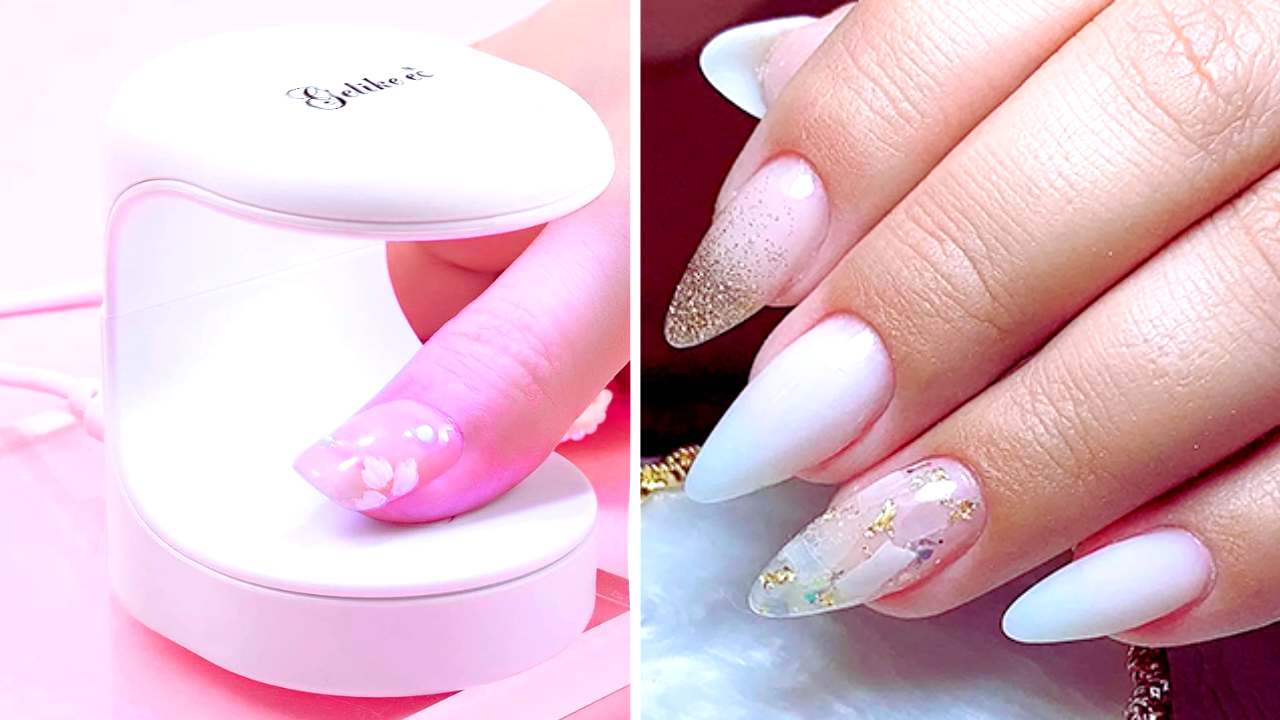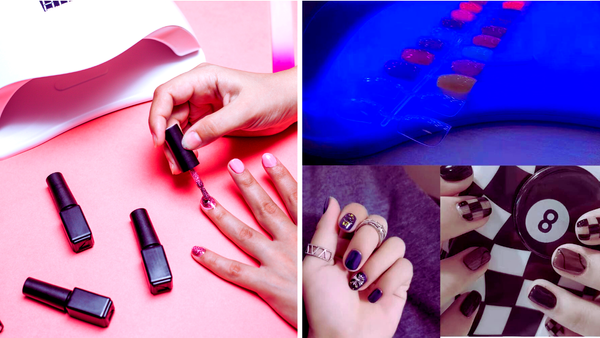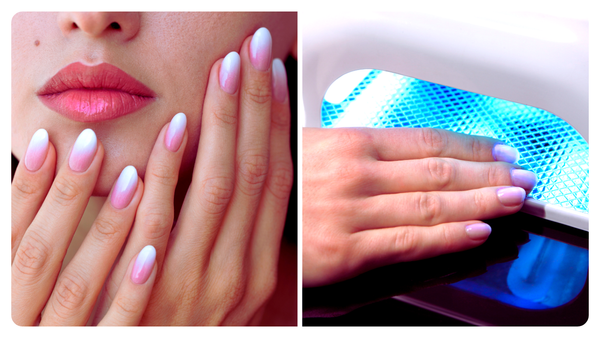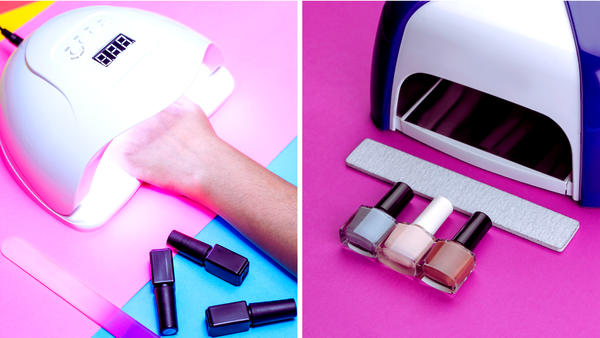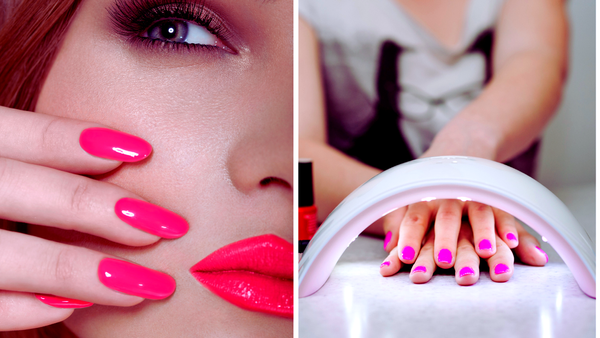If you’re wondering, “What does a UV nail light do?” it’s a crucial tool for curing gel nail polish, transforming it into a solid, durable finish in minutes. These lights use ultraviolet radiation to initiate a chemical reaction that hardens gel polish, ensuring your manicure is impeccably set and lasts much longer than regular polish. This article will explore the science of UV nail lights, how they compare to LED lamps, and offer insights on maximizing the safety and durability of your gel manicure.
Key Takeaways
- UV nail lights use ultraviolet light to harden gel polish through polymerization, creating durable and chip-resistant manicures.
- LED nail lamps are faster, more energy-efficient, and safer than UV lamps. They provide quicker drying times and emit less UV radiation.
- Protecting the skin from UV exposure is crucial when using UV nail lamps. This can be achieved through sunscreen application, protective gloves, or alternatives such as non-UV gel polishes and quick-drying sprays.
The Science Behind UV Nail Lights
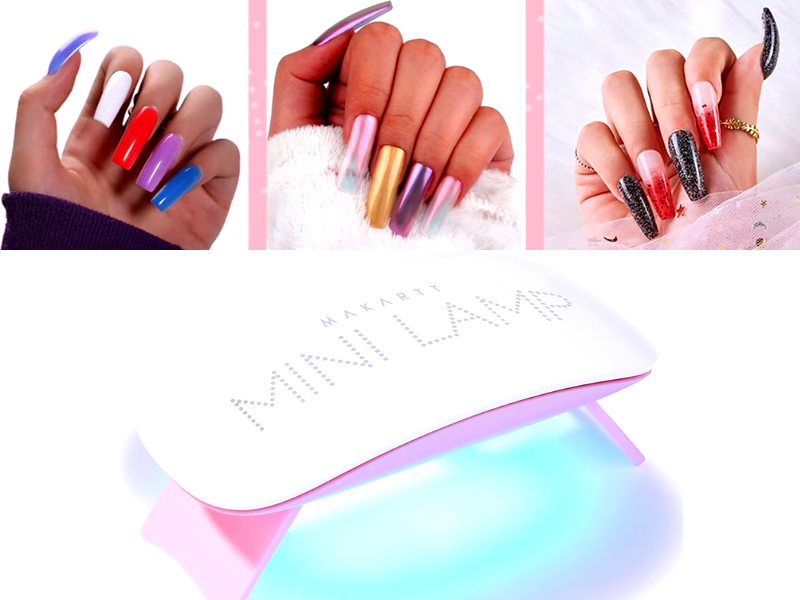
UV nail lamps emit ultraviolet light, a type of high-energy radiation that triggers a reaction in the gel nail polish. This reaction, known as polymerization, transforms the dissolved monomers in the polish into a long polymer chain, forming a hardened layer on the nail. This is why your gel manicure is durable and less likely to chip or peel. The UV light not only hardens the gel but also contributes to the manicure's longevity, ensuring your nails look salon-perfect for weeks.
But what part does ultraviolet light play in this process? We will now elaborate on this.
LED vs. UV Nail Lamps: A Comparison
LED and UV nail light are not created equal. In terms of drying time and energy efficiency, LED lamps have a clear advantage. They can cure gel polish in 45 seconds, significantly faster than UV lamps. This enhances drying time and efficiency, making your manicure session quicker and easier with an LED nail lamp. Moreover, LED nail lamps are more sustainable, using less energy and having a longer lifespan. Plus, they don’t produce greenhouse gases or require mercury, which benefits the environment.
Regarding safety, LED lamps are generally considered less harmful than UV lamps. They emit less UV radiation, thus reducing potential risks to your skin and nails. However, the drying time and safety of these lamps are not the only factors to consider. We will investigate these differences further.
Drying Time Differences
One of the most noticeable differences between LED and UV lamps is the curing time. LED lamps can cure gel polish within 30-60 seconds, making them a preferable choice for curing nail polish. On the other hand, curing gel polish under UV lamps requires 2-3 minutes for each layer. If you’re in a hurry, an LED lamp would be more efficient for drying your nails. However, a quicker drying time doesn’t necessarily mean safer. We will next discuss the safety concerns associated with these lamps.

Safety Concerns
There has been some debate about the safety of UV lamps used in nail salons. Recent studies suggest that they could cause significant damage to skin cells, potentially leading to skin cancer, with up to 20-30% cell death in a single 20-minute session and increased risk through repeated sessions. However, UV nail lamps have been deemed low risk by extensive scientific evidence when used properly over the past two decades. The FDA hasn’t attributed reports of burns or skin cancer to these lamps, and some research indicates a lower risk of developing non-melanoma skin cancer from UV nail lamp exposure compared to natural sunlight.
LED lamps are generally considered safer than UV lamps as they emit less UV radiation, thus reducing potential risks such as premature wrinkles, age spots, and, in extreme cases, skin cancer. However, it is important to note that not all UV lights pose the same level of risk, and proper usage can minimize potential harm.
Having addressed safety concerns, we will outline how to use UV nail lamps correctly.
Proper Usage of UV Nail Lamps
Proper use of UV nail lamps is key to achieving the best results with your gel manicure. The process begins with applying the gel nail polish in 4-5 thin coats, with each coat followed by exposure to UV light for curing. Each layer of the gel polish needs to be properly cured under the lamp for optimal results. Before applying the gel polish, it’s recommended to use a nail dehydrator to eliminate excess moisture. Also, always check the expiration date of your gel products to ensure their effectiveness. But before you even turn on that lamp, there are some steps you need to take to prepare your nails.
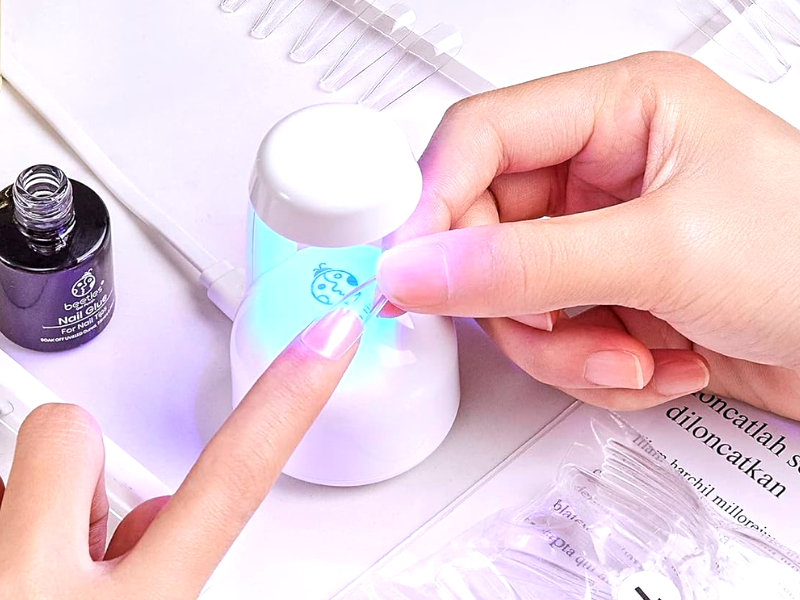
Preparing Your Nails
Preparing your nails for a gel manicure is an important step that shouldn’t be overlooked. It starts with:
- Cleansing your nails with a nail surface cleanser and a lint-free wipe soaked in a prep solution. This ensures a clean surface by removing oils, residue, or lingering dirt.
- Shaping your nails into your desired form.
- Pushing back and trimming your cuticles.
- Removing dead skin around the cuticle area.
- Buffing the nail surface enhances polish adherence, but be careful not to damage the nail.
After your nails are prepped, it’s time to apply a base coat. This creates an adhesive bond to the nail and protects it from potential damage or staining from the gel nail color. Proper nail preparation is vital for extending the life of your gel manicure, which can last up to three weeks with the right prep. Once your nails are prepared and your base coat is on, it’s time to cure.
Curing Process
The curing process is the heart of a gel manicure. You’ll need a UV nail lamp to cure each layer of the gel polish individually for a perfect finish. It takes around five minutes of UV light exposure to fully cure a gel nail manicure. This process helps ensure the gel polish sets properly and lasts longer. This includes each layer of gel polish, from the base coat to the topcoat, each needing to be cured under a UV lamp for the duration specified by the polish manufacturer. The topcoat layer is crucial for obtaining a high shine, chip-resistant finish to the gel manicure. Having covered the proper usage of UV nail lamps, we will now discuss how to protect your skin during the process.
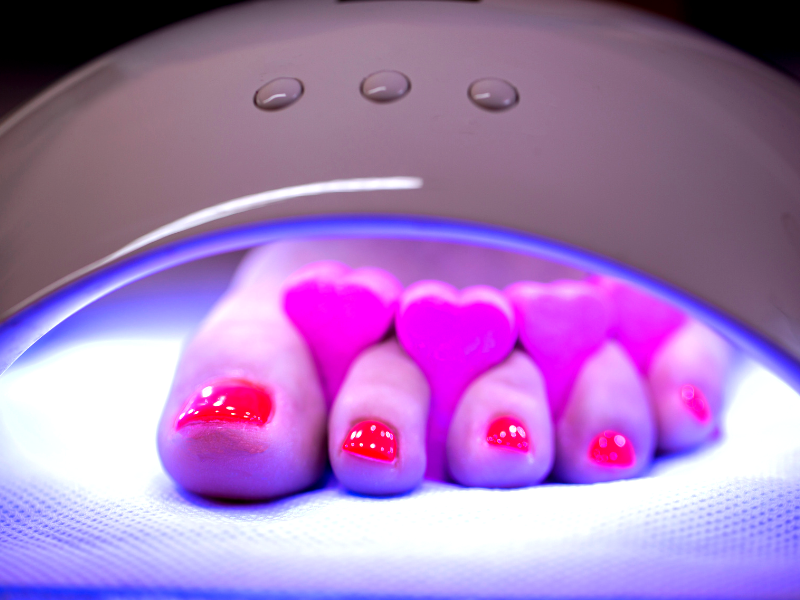
Protecting Your Skin During UV Nail Lamp Use
While UV nail lamps are essential for curing gel nail polish, they emit a type of high-energy radiation that could potentially cause skin damage or cancer with repeated exposure. But don’t worry—there are precautions you can take to protect your skin. For instance, you can use an opaque glove with cut fingertips or a cloth over your hand during the nail drying.
Another effective way to limit UV light exposure during the curing process is to apply SPF 30 sunscreen at least 20 minutes before placing your hands under the lamp. You can also wear fingerless gloves with UV-protectant properties, but keep in mind that their effectiveness decreases with each wash, so they should be replaced after a few uses to ensure protection is maintained.
Sunscreen Application
Applying sunscreen on your hands before using UV lamps can mitigate the risks of UV radiation. Sunscreen with an SPF of 30 or higher is recommended to help protect your skin from UV radiation when using UV nail lamps. If you want to add an extra layer of protection, consider using a broad-spectrum physical sunscreen that contains zinc oxide or titanium dioxide.
Protective Gloves
Another way to protect your hands during UV lamp use is wearing protective gloves. These gloves provide a barrier for the skin of your hands without interfering with the gel-curing process on your nails. Look for gloves with the fingertips removed, designed to expose the nails for curing while keeping the rest of the hand covered and protected from UV radiation. While protecting your skin is of utmost importance, there might be alternatives to using UV lamps altogether. We will look into some options.
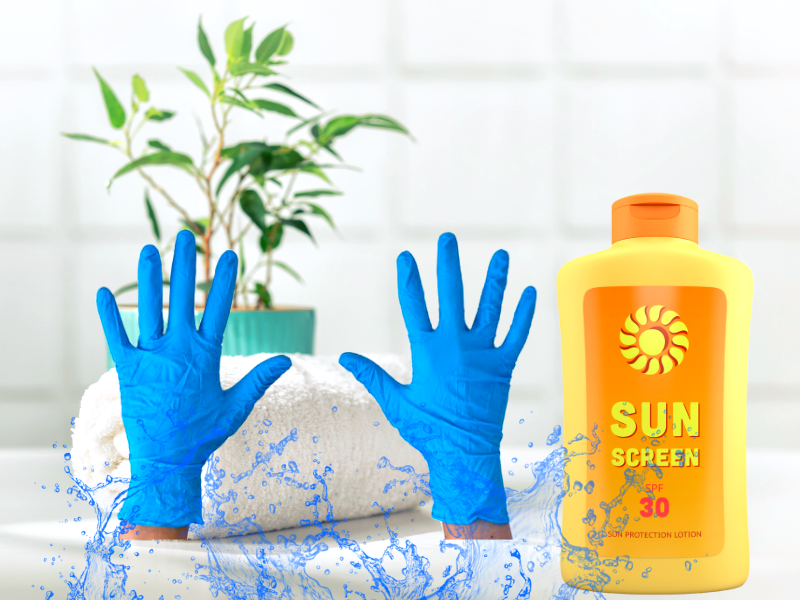
Alternatives to UV Nail Lamps
If exposing your skin to UV radiation still makes you uneasy, there are alternatives to UV nail lamps for gel nails. For instance, non-UV gel polishes are designed to cure without light exposure, providing an alternative for those avoiding UV lamps.
Other alternatives to speed up the drying process of nail polish include:
- Quick-drying nail polish sprays
- Using canola oil cooking spray on freshly painted nails to quicken the curing of the top layer of polish
- Immersing your nails in ice-cold water post-air drying to harden the gel polish more quickly
However, while these methods may speed up the drying process, complete curing may still require extended time.
Maintaining Your Gel Manicure
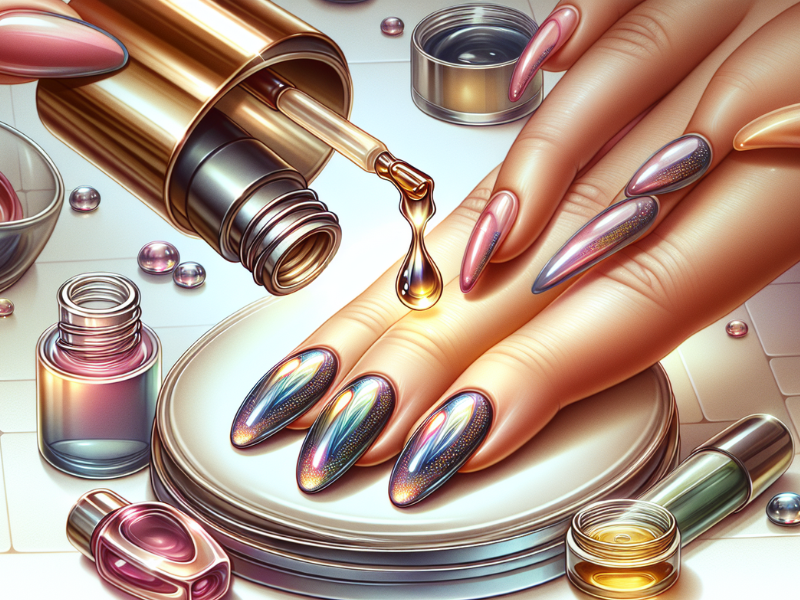
Getting a gel manicure is one thing, but maintaining it is another. Here are some tips to help extend the life of your manicure:
- Regularly apply cuticle oil
- Use high-quality gel polish brands
- Apply gel polish in thin layers
- Cap the free edge to prevent chipping
- If chipping occurs, file the affected area and reapply the topcoat
- Avoid using clippers to preserve the gel seal
By following these tips, you can enjoy your gel manicure for longer.
To keep your manicure looking fresh and prevent damage, resist the urge to pick at peeling polish. Also, store your gel polish and regular nail polish in a dark, cool place with the cap firmly screwed on to maintain their quality for subsequent uses.
Summary
To sum up, UV nail lamps play an essential role in achieving the glossy, durable finish of a gel manicure. While they do emit UV radiation, following safety precautions such as applying sunscreen or wearing protective gloves can mitigate potential skin damage. And if UV lamps still don’t appeal to you, alternatives like non-UV gel polishes or quick-drying sprays provide other options. Remember, maintaining a gel manicure requires careful preparation, correct application, and regular maintenance. With these tips, you’re well-equipped to enjoy a long-lasting manicure safely.
FAQ
How do UV nail lamps work?
UV nail lamps work by emitting ultraviolet light that triggers a polymerization reaction in gel nail polish. This reaction causes the polish to harden and form a long polymer chain, which helps cure the nails without the need for air drying.
Are LED nail lamps safer than UV lamps?
Yes, LED lamps are considered safer than UV lamps because they emit less UV radiation, but both are low risk when used properly.
How can I protect my skin when using a UV nail lamp?
To protect your skin when using a UV nail lamp, apply SPF 30 sunscreen 20 minutes before or wear protective gloves with the fingertips removed.
